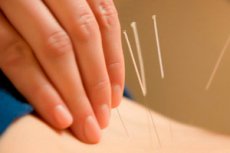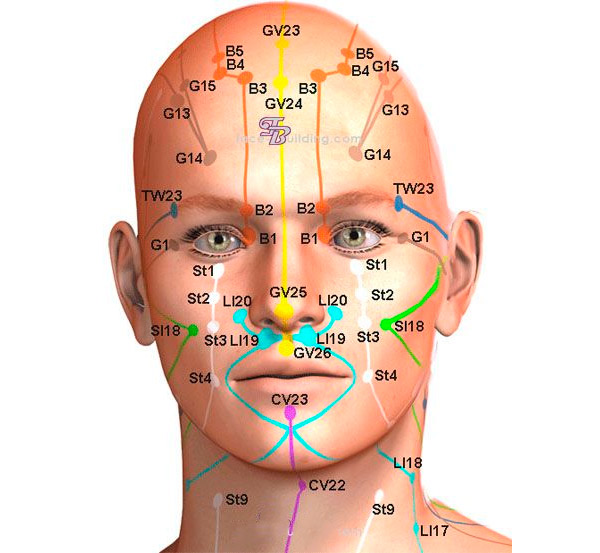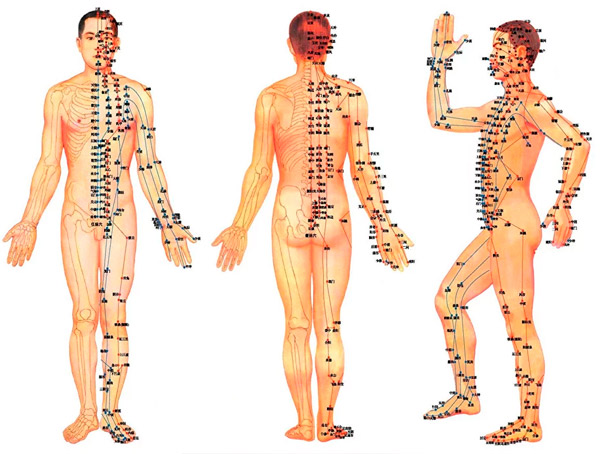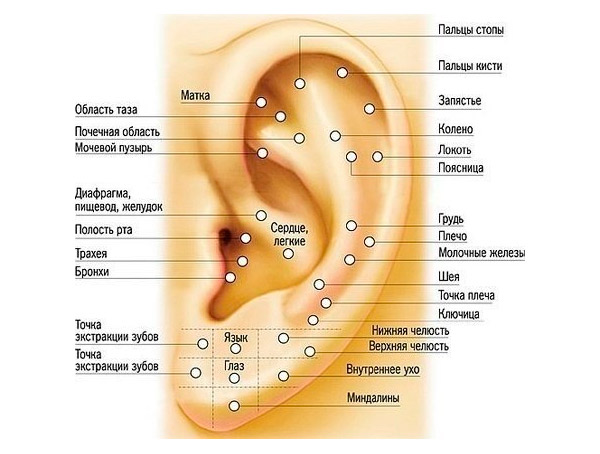Medical expert of the article
New publications
Acupuncture
Last reviewed: 29.06.2025

All iLive content is medically reviewed or fact checked to ensure as much factual accuracy as possible.
We have strict sourcing guidelines and only link to reputable media sites, academic research institutions and, whenever possible, medically peer reviewed studies. Note that the numbers in parentheses ([1], [2], etc.) are clickable links to these studies.
If you feel that any of our content is inaccurate, out-of-date, or otherwise questionable, please select it and press Ctrl + Enter.

Acupuncture is a traditional method of treatment and prevention that originates from Chinese medicine. It involves inserting thin metal needles into specific points on the body called "acupuncture points". The purpose of acupuncture is to restore the balance of energy in the body and improve its function.
The basic principles of acupuncture include the following:
- Energy Meridians: In Traditional Chinese Medicine, it is believed that there is a network of energy meridians in the body through which vital energy called "qi" circulates. Acupuncture points are located on these meridians and are used to regulate energy.
- Balance and Harmony: Acupuncture seeks to restore balance between two opposing forces called "yin" and "yang". According to traditional Chinese medicine, disturbances in this balance can lead to illnesses and symptoms.
- Point Stimulation: By inserting needles into accupuncture points, the acupuncturist stimulates these points to improve blood and energy circulation and to remove blockages of energy meridians.
Acupuncture can be used to treat a variety of conditions and symptoms including pain, stress, anxiety, insomnia, migraine, arthritis and many other conditions. Many people find relief from their problems after acupuncture sessions.
It is important to note that acupuncture should be performed by licensed and experienced professionals to avoid potential risks and complications. It is recommended that you consult with your physician prior to treatment and discuss appropriate treatments for your individual needs and condition. [1]
Indications for the procedure
Acupuncture can be used in the treatment and relief of a variety of conditions and diseases. There are many indications for acupuncture, and it can be used as a stand-alone treatment or in combination with other medical interventions. Here are some of the main indications:
-
- Back, neck and lower back pain.
- Migraines and headaches.
- Arthritis and joint disease.
- Menstrual pain.
- Pain after surgeries and injuries.
-
Stress and anxiety: [5]
- Stress relief and anxiety reduction.
- Improvement of psycho-emotional state.
-
Insomnia: [6]
- Helping to improve the quality of sleep.
- Reducing insomnia.
-
Gastrointestinal problems: [7]
- Irritable Bowel Syndrome (IBS).
- Gastroesophageal reflux disease (GERD).
- Dyspepsia and other gastrointestinal disorders.
-
Allergies and asthma: [8]
- Reduction of allergy symptoms.
- Improved asthma control.
-
Neurological diseases: [9]
-
Health maintenance and prevention:
- Strengthening the immune system. [14]
- Stimulation of general physical and mental well-being.
-
Other states:
- Skin Rejuvenation: Acupuncture for rejuvenation, also known as cosmetic acupuncture, is used to reduce signs of skin aging such as wrinkles and loss of firmness. This treatment stimulates blood circulation and collagen production. [21], [22]
Acupuncture can be helpful for a variety of diseases and conditions, but it is important to discuss its use with a licensed acupuncturist or physician who can evaluate your condition and determine the best treatment plan for you. It is also important to keep in mind that acupuncture can be used as a complementary therapy to mainstream medical treatment.
Preparation
Preparation for an acupuncture session may vary depending on your individual condition and your acupuncturist's recommendations. However, in general terms, preparation may include the following steps:
- Choosing a qualified practitioner: Before starting acupuncture, make sure your acupuncturist is licensed and professionally experienced. You can ask for references or consult with your doctor to choose the right professional.
- Consultation: Before your acupuncture session, the acupuncturist will have a consultation with you to establish your health, medical history and specific conditions. This will help the acupuncturist develop the best treatment plan for you.
- Notification of all medications and conditions: Be sure to notify your acupuncturist of all medications, supplements, and other treatments you are taking. Also report any existing medical conditions and diseases.
- Determining treatment goals: Work with the acupuncturist to determine treatment goals and expectations for acupuncture. This will help the acupuncturist select appropriate acupuncture points and techniques.
- Comfortable clothing: Wear comfortable and breathable clothing. Often acupuncture uses points on different parts of the body, so clothing should allow access to these areas.
- Before your session: Avoid overeating and drinking alcohol or coffee before your acupuncture session. You can have a light snack before the session to avoid hunger during the session.
- Relaxation and Peace: Try to relax and be at peace before your session. This will help you get the best effect from acupuncture.
- Following instructions: Follow the acupuncturist's instructions during the treatment, such as body posture and depth of breathing.
- Discussion of sensation: It is important to communicate with the acupuncturist during the session and report how you feel. This will allow the acupuncturist to adjust the treatment if necessary.
By following these guidelines and working with a qualified acupuncturist, you can maximize the benefits of acupuncture and achieve the desired results in treating or relieving your symptoms.
Technique of the acupuncture
Acupuncture techniques require certain skills and knowledge and should therefore be performed by a licensed and experienced acupuncturist. The following are the basic steps and techniques that are used when performing acupuncture:
-
Preparation:
- The acupuncturist conducts an initial consultation with the patient to determine treatment goals, diseases and symptoms.
- The patient is comfortably seated on a couch or chair.
-
Accupuncture point selection:
- Based on the consultation and diagnosis, the acupuncturist selects the acupuncture points to be stimulated.
- Acupuncture points are distributed throughout the body and are associated with specific organs and systems.
-
Equipment Preparation:
- The acupuncturist uses sterile disposable needles for each session.
- The needles have different lengths and thicknesses depending on the points selected.
-
Needle insertion:
- The acupuncturist gently inserts needles into the selected acupuncture points. This is painless, but the patient may feel a slight tingling or heaviness.
- The depth of needle insertion may vary depending on the selected point and the individual patient.
-
Stimulation:
- After inserting the needles, the acupuncturist may gently rotate, oscillate, or stimulate the needles with an electric current (electroacupuncture) to enhance the effect.
- The patient may feel a slight throbbing, warmth or burst of energy at the stimulation point.
-
Care and Safety:
- The acupuncturist monitors the safety of the procedure and ensures that standards of hygiene are maintained.
- After the session is over, the needles are removed and the points are treated with antiseptic.
-
Session length:
- The time spent with needles in the patient's body can range from a few minutes to over an hour, depending on the goals and treatment plan.
-
Monitoring and patient response:
- The patient remains under the supervision of the acupuncturist during the session. He can report his sensations and reactions to the treatment.
Acupuncture is considered a relatively safe procedure when performed by an experienced professional. However, it is always important to consult with your doctor and choose a licensed acupuncturist to ensure the treatment is safe and effective.
Acupuncture points on the human body
In Traditional Chinese Medicine and other acupuncture systems, there are many points on the body that have different functions and can be used for different purposes. Below are some of the most famous acupuncture points:
-
On the forehead:
- The Yangbai point (GV 20) is located on the top of the head, in the middle of the forehead.
- The Suifeng point (GV 16) is located closer to the back of the head.
-
On the face of it:
- The Hegu point (LI 4) is located between the thumb and index finger, on the upper side of the hand.
- The Taiyang point (LU 9) is located on the side of the radius, closer to the wrist.

-
On the neck:
- The Fenchi point (GB 20) is located on the side of the neck, in the area of the upper edge of the trapezius muscle.
- The Tianzhong point (LU 10) is located on the side of the forearm, near the elbow joint.
-
On the chest:
- The point "Kongqiu" (LU 1) is located below the clavicle, in the area of the upper part of the sternum.
- The Guanchun point (SP 4) is located on the inside of the ankle, below the knee.
-
On your back:
- The Fengmen point (BL 12) is located on the upper back, between the shoulder blades.
- The Guanchun point (BL 25) is located on the lumbar region of the lower back.
-
On your stomach:
- The point "Juusanli" (ST 36) is located on the front of the lower leg, below the knee.
- The Kunlun point (BL 60) is located on the back of the foot, above the heel bone.

-
On the ear:
- Ear points are also used in acupuncture and have their own specific names and functions.

This is just a small overview of acupuncture points and there are many more. The points are chosen depending on the treatment and diagnostic goals of the acupuncturist. It is important to note that acupuncture should be performed by an experienced and licensed practitioner, as improper use of needles or selection of inappropriate points can cause undesirable effects.
Acupuncture techniques
There are several different acupuncture techniques that can be applied depending on the treatment goals and preferences of the acupuncturist practitioner. Here are some of them:
- Classical acupuncture: This is the most common type of acupuncture. Needles are inserted into specific points on the surface of the body and may remain there for some time (from a few minutes to a few tens of minutes).
- Electroacupuncture: This technique uses needles that are connected to a weak electric current. This can enhance stimulation of points and improve the effectiveness of treatment.
- Acupressure: Instead of needles, finger pressure is used on specific points on the body. This technique can be gentler and is suitable for those who do not wish to use needles.
- Wet Acupuncture: In this technique, needles are inserted into points and then medical solutions such as vitamins or homeopathic remedies are injected into the points.
- Acupuncture massages: Acupuncture massages involve combining massage techniques with acupuncture to relieve tension and stimulate points.
- Moxibustion: This is a technique in which dry herbal moss (moxa) is burned over specific points on the skin to heat and stimulate those points.
Laser acupuncture
This is a method that uses laser light instead of traditional metal needles to stimulate accupuncture points on the body. This method is becoming increasingly popular as it provides an alternative to traditional needle acupuncture, and for many patients it is more comfortable and less invasive.
The main features of laser acupuncture include:
- Painless: Unlike needles, laser light does not penetrate the skin and does not cause pain or discomfort. This can be especially appealing to patients who have a fear of needles.
- Safety: Laser acupuncture is considered relatively safe and is not associated with the risks of infection or bleeding associated with the use of needles.
- Accuracy: The laser can be aimed precisely at selected accupuncture points, allowing for more precise stimulation control.
- Unwanted effects: Laser acupuncture is rarely associated with unwanted effects, although some patients may experience slight warmth or tingling at the site of laser exposure.
- Applicability: Laser acupuncture can be used for the same purposes as traditional acupuncture, including pain relief, stress and anxiety relief, improved sleep and other conditions.
However, it should be noted that the effectiveness of laser acupuncture is still a subject of research and debate in the medical community. Some studies show positive results, while others cannot confirm its effectiveness sufficiently. [23], [24], [25]
Patients considering laser acupuncture should see a qualified acupuncturist to discuss their needs and decide if this method is appropriate for their particular case.
Acupuncture for children
Can be an effective treatment in some cases, but it should be performed by an experienced and qualified acupuncturist or medical professional with experience working with children. Here are some important points to consider when considering acupuncture for a child:
- Age: Acupuncture can be safe and effective for children of different ages, but techniques and dosages are usually customized to the individual patient. Acupuncture for infants, young children and adolescents may differ.
- Qualifications of the professional: It is important to choose licensed and qualified acupuncturists who have experience working with children. Check their education and certifications.
- Individualized approach: Acupuncture treatment should be tailored to the individual needs and condition of the child. Different points and techniques can be used for different diseases.
- Discussing with a doctor: Before starting acupuncture for a child, it is important to discuss this decision with a pediatrician or doctor who is familiar with the child's medical history and can make recommendations.
- Safety: Acupuncture performed by an experienced practitioner is generally considered safe for children. However, there is a risk of infection and children may experience mild malaise after the procedure.
- Approach to pain: Depending on the age and the specific problem, the child may have a different perception of pain. The practitioner must be sensitive to the child's feelings and comfort and adapt the procedure to the child's needs.
- Effectiveness: Acupuncture can be effective for treating a variety of conditions in children such as back pain, headaches, allergies, sleep problems, stress and anxiety. However, its effectiveness can vary from case to case.
Before starting acupuncture for a child, it is important to consult with a qualified professional and discuss all the possible risks and benefits of the procedure.
Contraindications to the procedure
Acupuncture is a relatively safe procedure, but it does have some contraindications that may make it undesirable or dangerous to undergo acupuncture. Before beginning an acupuncture session, it is always important to discuss your medical history and current condition with a licensed acupuncturist or physician. Below are some common contraindications to acupuncture:
- Coagulopathies and clotting disorders: Acupuncture may increase the risk of bleeding, so it may be contraindicated in the presence of hemophilia, thrombocytopenia, and other clotting disorders.
- Pregnancy Potential: Some acupuncture points may stimulate the uterus, so acupuncture is not recommended for pregnant women without consulting a physician and acupuncturist who specializes in pregnancy.
- Infections and skin problems: Acupuncture treatment involves inserting needles into the skin, so it may be contraindicated if you have skin infections, ulcers, burns, or other skin problems in the area of the acupuncture points.
- Epilepsy: Stimulation of some acupuncture points can cause reactions in the central nervous system, so acupuncture can be dangerous for people with epilepsy.
- Serious surgical conditions: Acupuncture may not be desirable in the presence of serious surgical conditions such as acute internal organs or peritonitis.
- Pregnancy: Some acupuncture points can stimulate the uterus and potentially cause miscarriage, so acupuncture should be especially cautious during pregnancy.
- Mental Disorders: Patients with severe mental disorders such as schizophrenia may be more sensitive to the emotional and physical effects of acupuncture.
- Skin and tissue disorders: Acupuncture should be avoided in areas of disturbed tissue, inflammation or infection.
- Metal Allergy: Patients with known metal allergies may experience a reaction to needles, although this is rare.
Consequences after the procedure
After an acupuncture procedure, most patients do not experience serious or lasting effects. However, some may experience the following temporary effects:
- Soreness and discomfort: Some needle insertion sites may have discomfort or soreness for a short time. This usually goes away within a few hours after the procedure.
- Feeling tired or relaxed: Many patients report feeling relaxed and tired after acupuncture. Some may feel drowsy. This is a normal reaction to the procedure and usually disappears within a few hours.
- Weakness or dizziness: Some patients may feel weak or dizzy after an acupuncture session. Therefore, it is important to get up slowly and gently after the session.
- Bleeding and bruising: Rarely, but occasionally, slight bleeding or bruising may occur at the needle insertion site. These symptoms usually do not last long.
- Temporary worsening of symptoms: Sometimes there may be a temporary worsening of symptoms after acupuncture, especially if the treatment was for pain. This is a normal reaction and may indicate the beginning of the healing process.
- Emotional reactions: Some patients may experience emotional reactions after acupuncture, such as feelings of emotional release or temporary mood changes.
It is important to note that all of these effects are temporary and usually disappear within a short time. If you experience serious or long-lasting unwanted effects after acupuncture, be sure to tell your acupuncturist or doctor.
Complications after the procedure
Acupuncture is generally considered a relatively safe procedure when performed by a qualified acupuncturist and when hygiene standards are maintained. However, as with any medical procedure, complications can arise. Here are some of the potential complications from acupuncture:
- Infections: Although acupuncture is performed using sterile needles, there is a small risk of infection at needle insertion sites, especially if antiseptic rules are not followed.
- Bleeding: In rare cases, mild bleeding may occur at the site of needle insertion. This is usually minor but requires attention and monitoring.
- Organ Injuries: Improper needle insertion or use of needles near organs can cause injury. It is therefore important that the acupuncturist has good skills and knowledge of anatomy.
- Causing pain: Incorrect needle insertion or stimulation of acupuncture points may cause pain or discomfort. This is usually brief and disappears after the procedure.
- Allergic Reactions: In rare cases, patients may have an allergic reaction to the materials used in the needles.
- Pneumothorax: In extremely rare cases, acupuncture can cause pneumothorax (air or gas injury to the lungs). This occurs when the needle penetrates the lung. These cases are extremely rare but require immediate medical attention.
- Emotional reactions: Some patients may experience emotional reactions after acupuncture, such as unwanted emotions or mood changes.
- Exacerbation of symptoms: Temporary exacerbation of symptoms may be seen after acupuncture, especially if the treatment is for pain.
- Pregnancy and Timing: Acupuncture should be especially cautious during pregnancy and is not recommended in the first trimester without consulting a physician.
Care after the procedure
Care after an acupuncture treatment can help you maximize the benefits of the procedure and reduce possible unwanted effects. Here are some recommendations for care:
- Stay relaxed: After acupuncture, allow yourself to relax a little. Avoid physical activity and excessive exertion for a few hours after the treatment.
- Avoid hot baths and showers: Do not take hot baths or showers for several hours after acupuncture. A warm bath may be safe, but it is best to check with your acupuncturist for recommendations on water treatments.
- Avoid alcohol and coffee: Refrain from drinking alcohol and large amounts of coffee for several hours after acupuncture.
- Drink water: Make sure you are adequately hydrated and drink enough water after your treatment.
- Do not touch the needles: Do not attempt to remove or touch the needles yourself. Let the acupuncturist perform this procedure.
- Avoid stress: After acupuncture, try to avoid stressful situations and tension to enhance the relaxing effect of the treatment.
- Observe yourself: After acupuncture, pay attention to how you feel. If unusual or lasting unwanted effects occur, be sure to inform your acupuncturist.
- Follow your acupuncturist's recommendations: Your acupuncturist can give you specific recommendations for aftercare. Follow them for best results.
- Schedule multiple sessions: Depending on your condition and treatment goals, you may need more than one acupuncture session. Plan your next sessions based on your practitioner's recommendations.
- Discuss the results and plan of action: After several acupuncture sessions, discuss the results with your acupuncturist and discuss a further treatment or support plan for your health.
Following these guidelines will help you get the best results from acupuncture and reduce the risk of unwanted effects.

